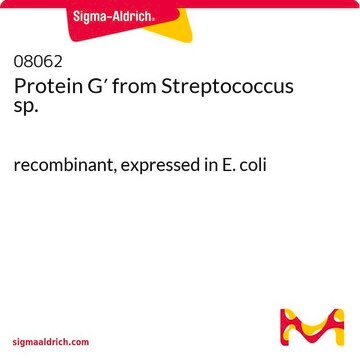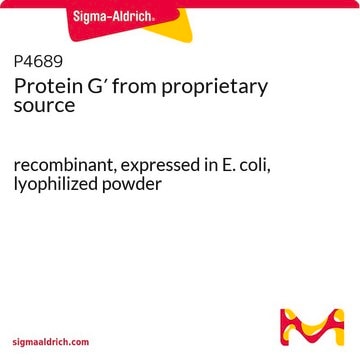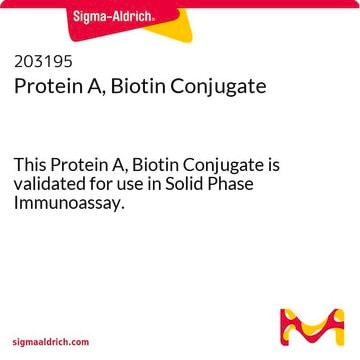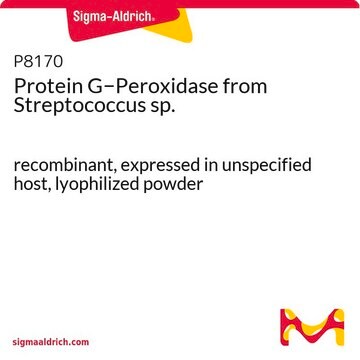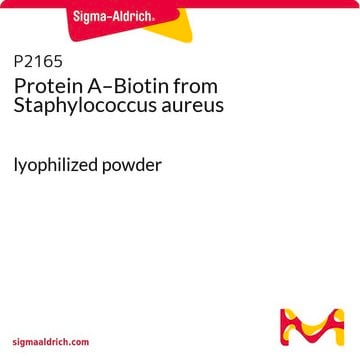P8045
Protein G-Biotin from Streptococcus sp.
recombinant, expressed in unspecified host, lyophilized powder
Synonym(e):
Biotinylated Protein G, Protein G Biotin, Protein G-Biotin
About This Item
Empfohlene Produkte
Rekombinant
expressed in unspecified host
Qualitätsniveau
Konjugat
biotin conjugate
Form
lyophilized powder
Zusammensetzung
Protein, ~90% biuret
Kennzeichnungsgrad
2-4 mol d-biotin per mol protein
Methode(n)
direct ELISA: 1:70,000 using human IgG
Lagertemp.
2-8°C
Allgemeine Beschreibung
Spezifität
Anwendung
Verpackung
Sonstige Hinweise
Angaben zur Herstellung
Haftungsausschluss
Lagerklassenschlüssel
11 - Combustible Solids
WGK
WGK 3
Flammpunkt (°F)
Not applicable
Flammpunkt (°C)
Not applicable
Persönliche Schutzausrüstung
Eyeshields, Gloves, type N95 (US)
Analysenzertifikate (COA)
Suchen Sie nach Analysenzertifikate (COA), indem Sie die Lot-/Chargennummer des Produkts eingeben. Lot- und Chargennummern sind auf dem Produktetikett hinter den Wörtern ‘Lot’ oder ‘Batch’ (Lot oder Charge) zu finden.
Besitzen Sie dieses Produkt bereits?
In der Dokumentenbibliothek finden Sie die Dokumentation zu den Produkten, die Sie kürzlich erworben haben.
Kunden haben sich ebenfalls angesehen
Unser Team von Wissenschaftlern verfügt über Erfahrung in allen Forschungsbereichen einschließlich Life Science, Materialwissenschaften, chemischer Synthese, Chromatographie, Analytik und vielen mehr..
Setzen Sie sich mit dem technischen Dienst in Verbindung.
